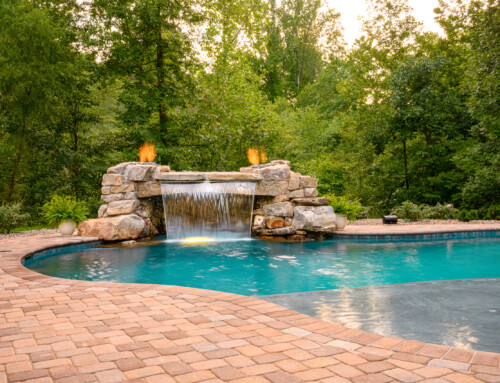There are many things to consider when designing a patio space that you might not think about. Of course we do not expect you to know the exact answer to all of these, but having a better idea of the type of space you want can help us design to your personal style.
Here are 6 questions to consider:
How many people will be using the space?
Knowing how many people you are trying to accommodate in a given space is important to its size. Do you have a large family? Do you entertain a lot for large groups? Maybe you just need space for 4 people?
What do you want to use it for?
Do you just want lounging space? A firepit area? A grilling area? Or all of the above? Just like the first question, it all has to do with how much space is needed to fit all these desired elements/ activities. This is not to scare you into only choosing a few things in fear that the space gets too large, but to help you determine your priorities within the design.
How do people move through the space?
Where are people coming from? Around the side of the house? Out of the back door? Off the deck? Where are they going to? Is this the patio the only destination? These are important questions to consider in order for the flow of people to be accommodated. For example, someone coming out of the kitchen door might be going to the grill. Therefore locating the grill in an If appropriate location helps with the flow. Rather than putting the grill on the opposite side of the patio, you might put it closer to the back door of the house.
What type of material?
Material choices do not always have to be at the beginning of a project. Not everyone knows exactly the type and color material that they want to use. However, if you do have a preference, it’s important to note it because that can assist in knowing your style, which in term can help design. If you like an angular/square cut flagstone the shape of the material lends itself to a more formal design. An irregular shape flagstone would lend itself to a more organic or curvilinear shape to the space. There are a wide variety of material choices with a range of costs. The project budget can also determine the appropriate material options. The budget should not dictate design, but through value engineering the desired layout and design elements can be achieved while working when working with a smaller budget.
Is your style more formal (angular) or organic (curvilinear)?
It’s all about personal style choice, and the existing architecture of your home . Do you like more natural flowing designs? Or do you like more formal and angular options? If you do not mind either choice, consider the style of your house and the existing landscape that surrounds it. Do you live in a colonial/ traditional home? Then a more formal design would suit the architecture. While a more craftsman or farmhouse style home would have a more organic design.
What are the existing conditions of the property?
There are many things to consider, which you need to at least be aware of that can affect the overall design/ implementation. Do you want any specific views or is there anything that you would want to screen out? Is your property flat or is a wall required because of slope? Where are the underground utilities located, like septic fields/power lines/water lines? Constructing over utility lines can be done in some cases but considerations need to be made for being able to have access to the utilities in the future for maintenance purposes. Does the property have large amounts of water draining across it that needs to be redirected around the patio space through grading or other drainage structures? Existing conditions on site should not be the only considerations that affect the design, but should be considered to make the space functions correctly.




